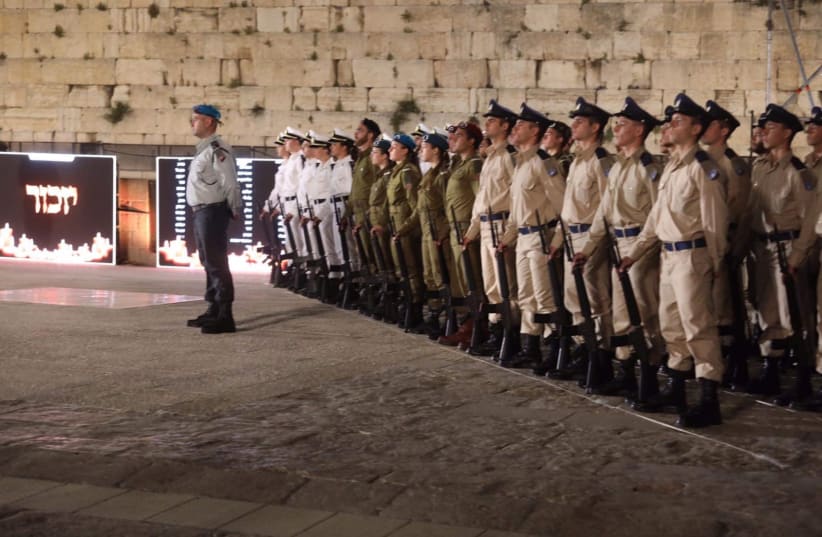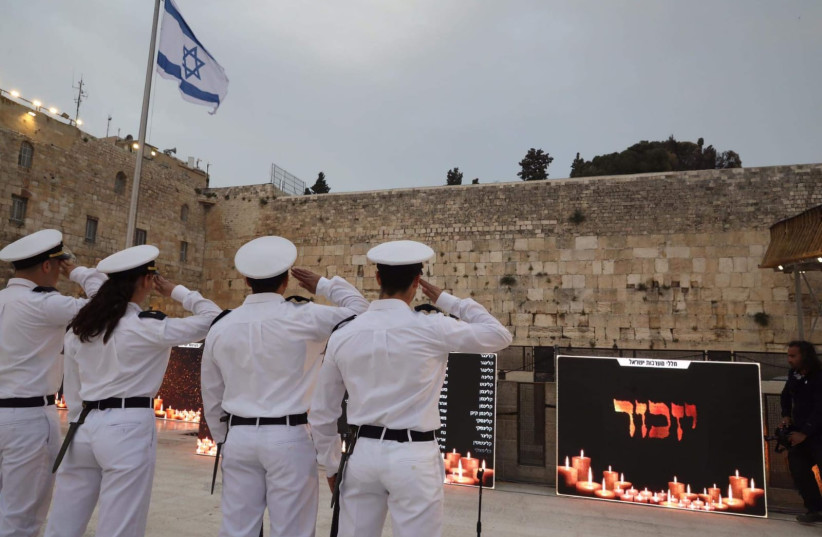Growing up in America, I never experienced a personal connection to any soldier killed in Vietnam, didn’t know anyone who fell in action, didn’t even know anyone who did, as does every Israeli who grows up here. But after living in Israel for 30 years and experiencing too many wars and military actions, the stories of the soldiers who fell in those operations have become personal. And they are everywhere.
Last week I went to Mount Herzl for the memorial service of Shmuel Weiss, the 20th anniversary of his death in combat during Operation Defensive Shield.
The deadliest battle of that operation took place April 9, 2002, in a refugee camp in Jenin. An IDF reservist force that entered the narrow streets and alleys was hit by explosives, and the soldiers sent in to extract the wounded met an ambush with heavy crossfire. Thirteen soldiers died.
Some call it the hardest day of the war. For Zipporah and Arye Weiss, the hardest day was the day before. Their 19-year-old son, Shmuel, was also in Jenin, serving as a medic with the Third Platoon, 51st Battalion, of the Golani Brigade. When platoon-mate Matanya Robinson got hit in an ambush in the refugee camp, Shmuel rushed to attend his wounds. Shmuel got hit. Robinson and Weiss both died.
Shmuel Weiss is not a famous soldier, except to his family, their friends, the soldiers with whom he served, and the soldiers who currently serve in that same platoon who come to the yahrzeit service every year. To all of them, he is their hero.
He’s mine, too. Shmuel Weiss became my hero because his father has been a close friend for 55 years, since we were classmates in high school in Skokie, Illinois. I had known Shmuel since I made aliyah, when he was nine. His death was personal.
Weiss is buried in Area D, Section Six, a plot of land no different than in any of the country’s 52 military cemeteries: row after row of hero after hero.
Over the years, when I would go to Shmuel's yahrzeit ceremony, I started looking around at the other plots surrounding where he is buried, and discovered that I knew more soldiers.
There are seven rows of graves in Area D, Section Six; Weiss is in the sixth. Five rows behind him is the final resting place of Michael Levin, 22 years old when he was killed on August 1, 2006, in the Second Lebanon War. He died during an intense firefight with Hezbollah inside the village where kidnapped soldiers Ehud Goldwasser and Eldad Regev had been taken two weeks earlier, which set off the war.
I didn’t know him personally, but Levin – who moved to Israel from Philadelphia by himself in 2002 and joined the Paratroopers Unit – is famous as the godfather of every lone soldier serving today. It was he who loudly raised the issue of helping those serving in Israel without families, while serving as one himself. He spoke openly about his dream to build what became after his death the only center for lone soldiers, a place where they receive meals, support, and advice throughout their army service. Levin also inspired others to follow him to make aliyah, serve in the IDF, and build a life in the Land of Israel.
On the same level directly behind where Levin lies is Section Seven. Walk four rows in and you come to the grave of Roi Klein. He was 31 when he was killed during the battle of Bint Jbeil on July 26, 2006, in the Second Lebanon War. Deputy commander of the 51st Battalion of the Golani Brigade – same as Shmuel Weiss’s – Klein is one of the most famous of Israeli war stories, the ultimate hero: he threw himself on top of an incoming grenade to save the lives of the men surrounding him. I didn’t know him personally, but nothing need be said after that.
And seven rows behind Roi Klein lies Max Steinberg. He was a 24-year-old lone soldier killed in Gaza on July 20, 2014, during Operation Protective Edge, while serving as a sharpshooter in the Golani 13 Brigade.
Steinberg didn’t have a Jewish education, knew next to nothing about Judaism growing up in Woodland Hills outside Los Angeles, and had no interest in coming to Israel until his siblings convinced him when he was 22 to join a Birthright trip.
On that trip, Steinberg went to Mount Herzl to visit the grave of Michael Levin, and was inspired on the spot to change the course of his life: he would make aliyah, serve in the IDF, and build a life in the Land of Israel. I didn’t know him personally, but neither did the 30,000 Israelis who answered the call and came to his funeral. Max indeed followed Michael; and here they lie, 11 rows apart.
These are four of the men we salute today, who died at ages 19, 22, 31, and 24 in Operation Defensive Shield, the Second Lebanon War and Operation Protective Edge. Here they lie, in this small parcel of earth called Area D, four of the 24,069 IDF soldiers, police officers, prison wardens, Shin Bet security service and Mossad agents who have given their lives for the Jewish people since 1860.
Row after row, hero after hero. It’s all personal.

